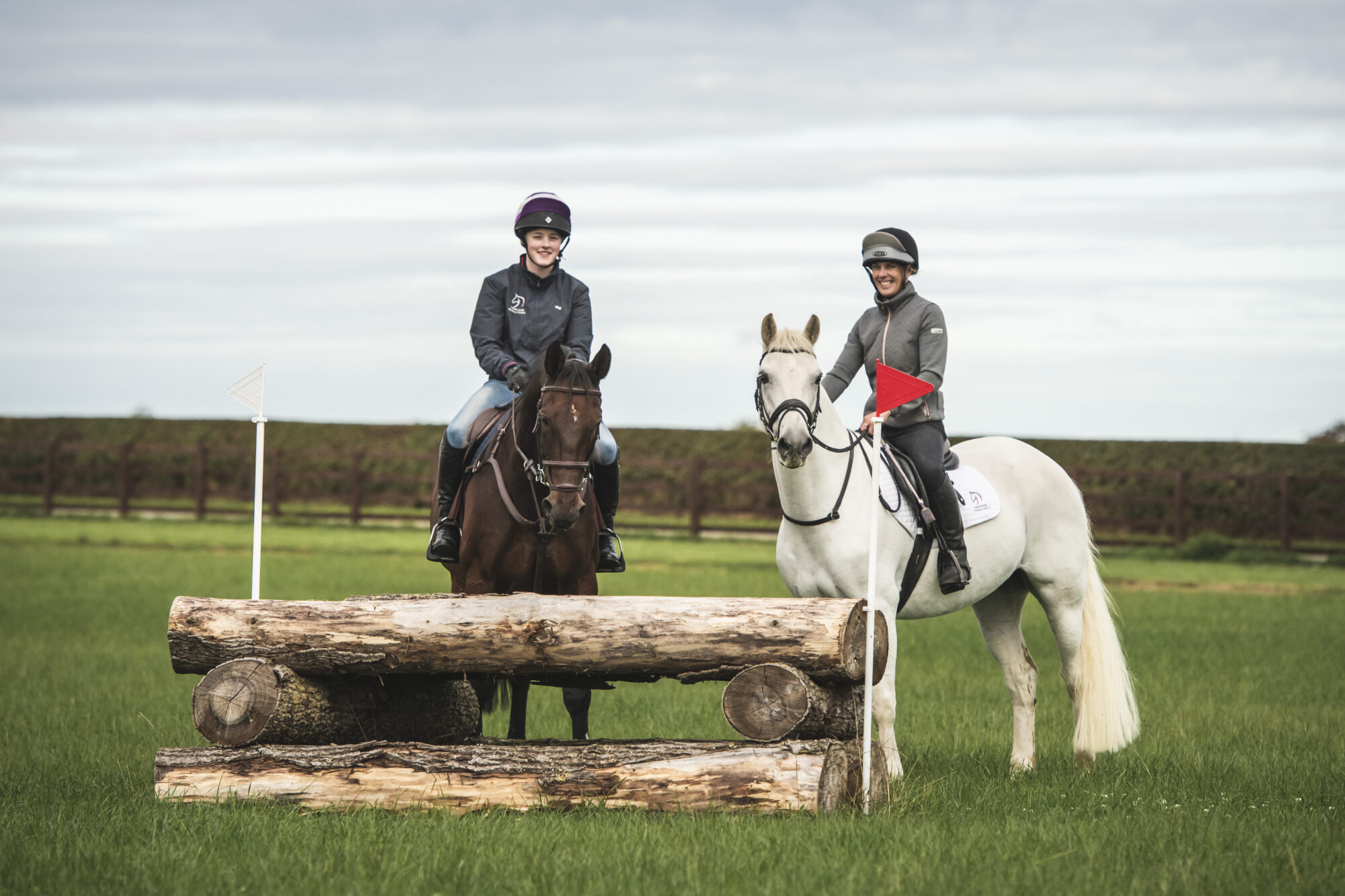If you’re bringing on a young horse and you’d like to go eventing or try your hand at hunter trials, you’ll need to introduce them to cross-country for the first time. One thing we would recommend is spending some time in the school (with poles and small show jumps) to work on your communication and boosting their athleticism. That way, if they get in a pickle over fixed jumps, you’re more likely to have the collective skills to get out of a fix. Then, when you’re ready to start your young horse over cross-country fences, here are the six stages we recommend you use. If you’re able to follow them then you’re more likely to help them feel relaxed and able to enjoy their job, rather than anxious, which can spill over into wildly over-excited!
- Bring a friend with an experienced cross-country horse with you. This needs to be a horse who doesn’t get excited or too ‘hot’! Together they can give your horse a quiet lead over fences and show them the ropes without any tanking off or airs above the ground.
- Warm up properly to avoid injury. As we mentioned in the introduction, your young horse is still building up both physical athleticism and their mental skills, so you need to make sure they’re well warmed up and listening to you before you begin jumping! Hacking around the course will help warm up and give your horse the chance to look around and take things in… Remember to include transitions and circles on both reins.
- Keep everything slow and steady to build their confidence. It’s much better to take cross-country schooling with a young horse slowly and repeat fences and sessions rather than do too much the first time. If you over face them, you risk them and risk them getting scared and backing off fences in the future. Building confidence is key, because it’s much harder to get it back than it is to build it up. Think happy horse, loads of pats and repeating things until they understand!
- Plan to teach them new things in small steps and give your horse time to process what they’ve seen and learned. For example, start with straightforward fences with good ground lines and a lead from the other horse. After they’ve followed the lead horse over a fence, try popping the same fence on their own. Move on to jumping two fences in sequence in the same way.
- Introduce new obstacles gradually. Once your horse is confident jumping a couple of simple fences, you can introduce new elements. That might be by walking and trotting them through water, stepping up and down small steps or tackling a simple ditch.
- Keep their first session short – remember, their brain is getting as tired as their body will be. A training session for a young horse doesn’t need to be any longer than 30 minutes after the warmup, so bear that in mind! Walk them around to cool off and work out what you want to work on next time!
After a couple of sessions, your horse will know what’s expected of them but doesn’t find the experience overly stressful. If you decide to enter a competition, make sure you’ve covered off all the possibilities before the big day. Even small courses and hunter trials can throw up something new! We recommend finding a dedicated cross-country field with keyholes, steps, skinnies, drops, ditches, coffins, Trakehners and more! If you run into any problems, you can always go back to the school and practice gymnastic jumping, communication, skinny fences and tricky lines – whatever you’re having trouble with. Then, take those skills back out to the cross-country course and work on them there!
Don’t forget that our cross-country field is open all summer long and we’ve got fences ranging from 70cm to 105cm, all designed and built by a BE-accredited expert. Who’s in?
